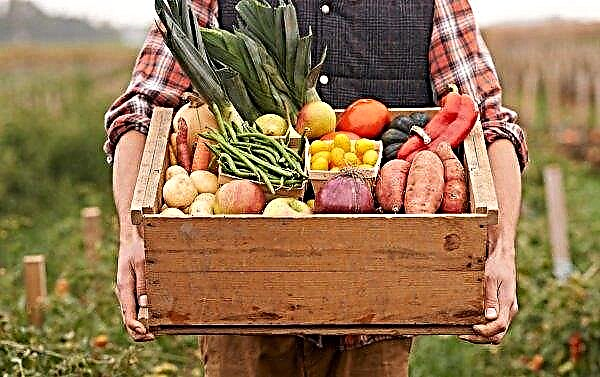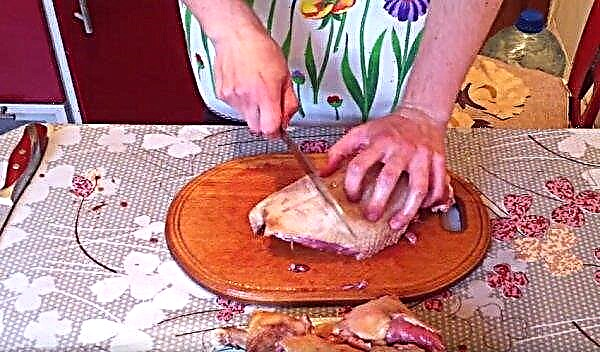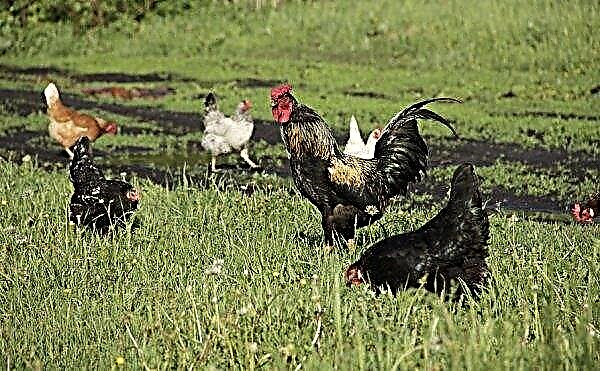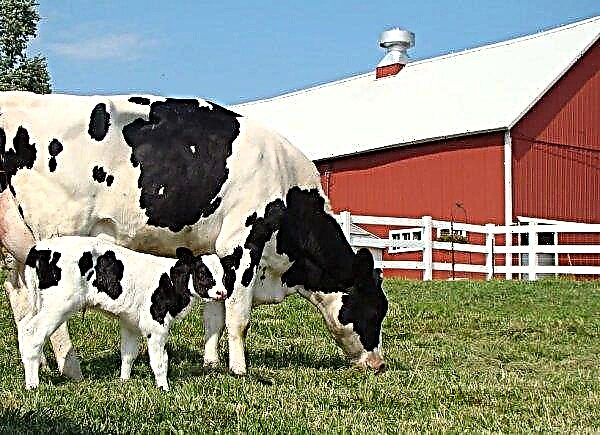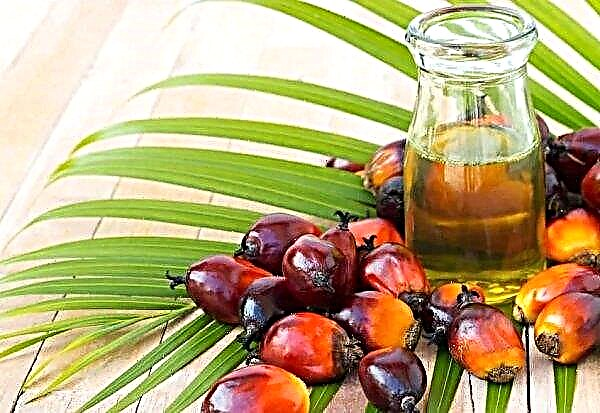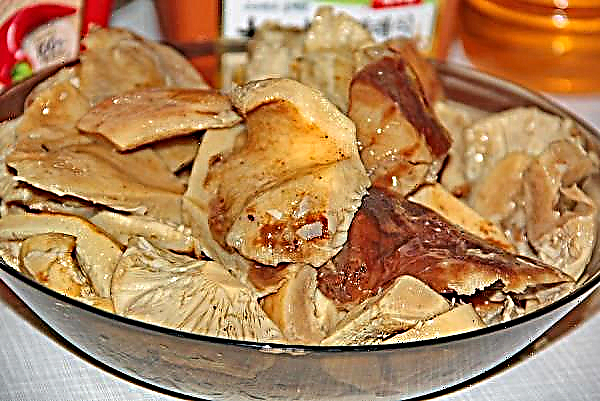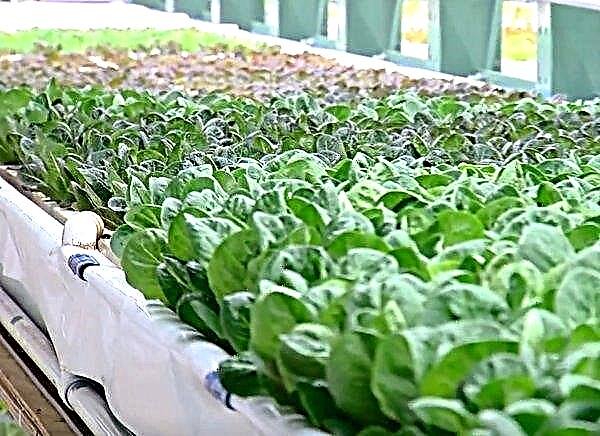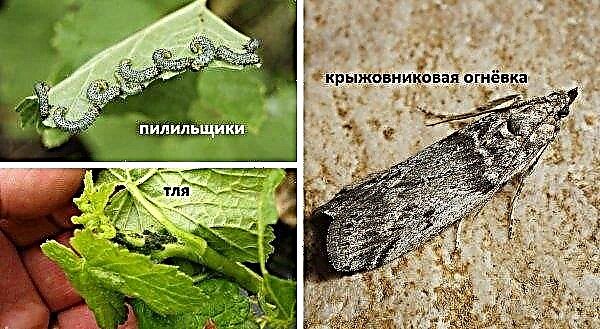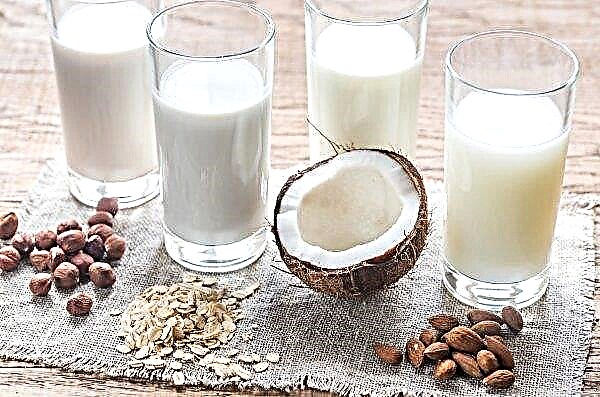Each gardener should grow at least a bush of black currant on his plot. The berry has a lot of healthy substances, has a pleasant pronounced aroma and excellent taste. Hercules (another name is Hercules) is especially popular among gardeners. The advantage of the variety is good harvests, large fruits with excellent taste. In addition, this variety does not require particularly careful care.
Grade Geography
Hercules was bred relatively recently, at the end of the last century in Siberia. Brought him at the Siberian Research Institute of L. Zabelin. It is noteworthy that the variety can be grown in cold Siberian conditions, and in a warmer climate.
Botanical Description
Hercules is a makeshift variety with straight-growing, medium-dense bushes. Young shoots are green with a faint pink tint, medium thickness or thick. Old shoots become woody, turn light brown with a faint sheen and faint plaque.
The buds are single, small, located in groups at the top of the shoots, have a light green color with a pink tint. The leaves of this variety are dense, smooth, large, three-lobed. Bright green color. Petioles are thick, of medium length, with pubescence, light green in color.
The flowers of the plant are medium, unclosed, cream-colored with a pink border. The brushes are long, one in a knot, green with a slight pubescence. The peduncle is medium, short, pubescence is weak. The berries are large, round, black, have a faint sheen and a touch of light. The skin is thin, fairly elastic. Inside the berries there are many small seeds of a light brown hue. The separation of the berries is dry. Calyx is medium, falling.
Did you know? Unripe currant berries contain 4 times more active vitamin C than ripe ones; when overripe, the amount of vitamins in the berry decreases.
Characteristic
This variety has gained its wide popularity due to its good characteristics.
Drought resistance, frost resistance
The variety, bred in Siberia, is characterized by excellent winter hardiness, it is able to survive even severe frosts without shelter. However, the plant does not like heat, but loves a lot of sun. In a cloudy, rainy summer, berries will accumulate the least nutrients.

Productivity and fruiting
The variety is notable for its good yield; about 3.5–4 kg of berries from each bush can be harvested per season. If we consider productivity on an industrial scale, it is believed that you can collect up to 11 tons of fruits per hectare of land. The variety is late, but this does not affect the ripening of the crop, there are equally many berries from season to season, they are large in size.
Advantages and disadvantages
- The obvious advantages of plants include:
- high yield in both northern and southern regions;
- good taste;
- self-fertility;
- large fruits that easily tolerate transportation over long distances and long-term storage;
- high cold resistance and frost resistance;
- immunity to fungal diseases;
- unpretentiousness to type of soil;
- unpretentiousness in leaving, it is advised to plant it to beginner gardeners.
The main and almost the only minus of the variety is the instability to infection by the kidney tick.
Berry size, taste
Currant Hercules bears fruit in large and very large berries. Their weight can vary between 1.5–3.5 g. Also, the fruits are distinguished by good taste: sweet and sour taste, berries are considered dessert. It is also good to make jams and preserves from them.
Video: Currant Hercules
Landing Features
Despite all the unpretentiousness of this variety, it has some features of planting, on which the crop will depend. But even inexperienced gardeners and gardeners will not be difficult to plant in their area at least a couple of bushes of this currant.
The timing
Hercules can be planted both in autumn and spring. However, the microclimate should be taken into account: in regions where spring begins early and the summers are hot enough, plants that do not have time to take root well often die from the heat. Then it is better to land in the fall.
Important! If frost begins, it is better to postpone the planting, otherwise fragile seedlings may die.
Conditions
To breed Heracles, it is necessary to observe some conditions for planting seedlings. Prepare the holes in the bed at a distance of at least a meter, otherwise the plants will begin to hurt. If you are going to plant bushes in several rows, then increase the distance between the seedlings again.

Pits for planting are prepared in advance (you can two months before planting), then the soil will have time to "settle down", which will positively affect the development of plants. The depth of the holes should be about 30–40 cm. Fertilizers (compost, manure) can be added to the bottom.
Choosing the right place
Currant loves sunny areas and enough moisture, however, she really does not like areas blown by the wind. Therefore, when choosing a site, it is better to stop at the place where it will be possible to build a fence that will protect the seedlings from draft and wind. Also take into account that moisture should not stagnate on the site, otherwise it is worthwhile to arrange a drainage system to remove excess moisture. If the soil is too acidic, then pour the soil with lime milk to get rid of it.
Did you know? Currants contain a large amount of pectin and ascorbic acid, therefore it is recommended for nutrition to those who work in hazardous industries, especially with radiation.
Selection and preparation of seedlings
When selecting seedlings, be sure to carefully examine their roots, make sure that they do not have spots or other signs of disease. On seedlings should be at least 2-3 shoots. A healthy seedling has 3-5 skeletal yellow-brown roots with a length of 15–20 cm. Also, healthy currants have sprouts that resemble threads. It is better to plant the purchased seedlings immediately.
Landing algorithm
The landing itself is simple:
- Place seedlings in pre-dug pits (observe an angle of 45 °).
- Abundantly pour holes.
- Pour the soil there, mix.
- Deepen the plants 5-10 cm into the ground.
- In conclusion, cut the branches, leaving at the same time half of the original length (this updates the crown and helps to grow roots).
Video: Planting blackcurrant
Care
To obtain a quality crop, it is important to provide the currant with the necessary conditions and proper care. Be sure to loosen the soil. Too much rammed land slows down the development of the plant, which leads to a decrease in the quantity and quality of the crop. Only the top layer of the earth is loosened so as not to damage the roots of the plant. It is better to loosen after watering.
Watering is required abundant, but it is better not to overdo it, 3-4 times per season will be enough, the latter is necessary after fruiting in order for the plants to regain their strength. The bush will be able to take the rest of the moisture from natural precipitation.Pruning also needs to be done regularly, then the bushes grow better. In addition, pest prevention is thus implemented. Shrubs are usually cut before the buds appear (April), or in the fall, when the crop is harvested, but before the onset of frost.
When cropping, follow a few rules:
- cut the shoots to a level with the ground, without leaving sticking sprouts;
- cut off diseased, deformed, damaged and too old shoots;
- cut off branches that fall strongly to the ground;
- annually remove a couple of old shoots to rejuvenate the bush.
If you trim the bush correctly, about 15 branches should remain on it. Currants should be fed during planting, and then from 3 years from the moment of planting. Under each bush, make 1 tbsp. l superphosphate and potassium sulfate per 10 liters of water. This type of feeding is performed twice a season.
 Fig. 1. Trimming currants_a - an annual seedling; b - a biennial bush; c, d - shortening of shoots. Fig. 2. Currant bush before anti-aging pruning (a), after it (b) and pruning of a neglected bush (c).
Fig. 1. Trimming currants_a - an annual seedling; b - a biennial bush; c, d - shortening of shoots. Fig. 2. Currant bush before anti-aging pruning (a), after it (b) and pruning of a neglected bush (c).
Winter preparations
Hercules is cold-resistant, however, it is better to shelter bushes for the winter. First, shoots need to be bent to the ground in the direction of their growth and grouped in 3-5 pieces, then a board is laid on top and a brick on it. The tree trunk is sprinkled with quail sawdust, leaves or sunflower husk. So you protect the bushes from frost and keep the moisture in the soil. After snowfall, transfer the material to the branches and lightly rinse. If the snow hasn’t fallen, cover the bush with pine conifer or agrofibre.
Video: Preparing currant bushes for winter
Breeding methods
The most popular and convenient methods of propagation of currants are vegetative. The easiest of them is reproduction by layering. To do this, in the early spring, find a branch no more than 2 years old, which can be tilted down without damaging it. Under the selected branch, dig a hole with a depth of 10-12 cm and bend the branch down so that its middle part is in the hole, and the top protrudes above the ground.
Do not forget about thoroughly watering the branch. Over the summer, it will grow into a powerful seedling, then it can be cut off from the parent bush. Then you can transplant the branch to the garden.

Propagation by lignified cuttings allows you to harvest seedlings even during winter frosts. To do this, cut branches (cut them on both sides) at the end of autumn, 18–20 cm long. Cut them before the onset of severe frosts. Cuttings are cut from annual shoots on 2-3 summer branches. It is better to cut them from the middle of the shoot, where its thickness is 8-10 cm. Then treat the slices with warm paraffin or garden var.
Wrap the cuttings with moistened paper, then polyethylene. Store until disembarkation they need to be buried in the snow or placed in the refrigerator. In the spring, plant the cuttings on the beds, observing a distance of 15 cm. Before the moment of planting, the tip of the cuttings is cut, leaving an oblique cut.
When planting cuttings, two buds are left on the surface. Then water the beds abundantly. Install arches 40-50 cm high above the beds, and cover with plastic wrap. It will be possible to remove it in the presence of the first leaves, then begin to water the beds. In autumn, you will get seedlings 30-50 cm long with 1-2 shoots, then you can plant them on the garden. Propagation by green cuttings is a longer and energy-consuming process, for its implementation a greenhouse or a greenhouse with the function of fogging is required. Cuttings are cut 5–10 cm long from well-developed shoots; two green leaves are left on each of them. It is advisable to lower the cuttings at the 12-14 hours base in a liquid growth stimulator. In the process, do not forget to ensure that the humidity level is high and the temperature is +18 ... + 24 ° С.
Propagation by green cuttings is a longer and energy-consuming process, for its implementation a greenhouse or a greenhouse with the function of fogging is required. Cuttings are cut 5–10 cm long from well-developed shoots; two green leaves are left on each of them. It is advisable to lower the cuttings at the 12-14 hours base in a liquid growth stimulator. In the process, do not forget to ensure that the humidity level is high and the temperature is +18 ... + 24 ° С.
You can also prepare cuttings for planting currants from the last winter month. Put the cuttings in the water, wait for the roots to grow to a length of 10-12 mm. Next, transplant the cuttings into bags with soil, having previously made holes from the bottom for outflow of water. Watering the cuttings should be abundant every 2-3 days. When 10 days have passed after placing the seedlings in a bag, reduce the watering to normal. By early May, seedlings reach half a meter in height, they need to be planted 10-15 cm deeper than they were in the ground in packages.Important! The roots of planted cuttings are still weak, because they must be constantly watered.
Video: How to root currant cuttings in water
Diseases and Pests
Heracles currant is not affected by anthracnose and septoria. In general, this currant is prone to few diseases and parasites, and observing some rules for their prevention, you will get rid of them for good.
- Kidney tick - a small insect that hibernates inside the buds of plants. With the onset of heat, the pest wakes up. Females lay eggs inside young buds, later they stop their development because of this. Signs of a tick on the bush are curly and marbling. Infected kidneys resemble cabbage due to severe bloating. Methods of pest control will be the removal of manually affected kidneys, treatment with boiling water or special drugs. For the prevention of infection of plants with a kidney mite, sanitary pruning is required in time, only healthy seedlings are planted, timely weed removal from the beds.

- Currant Glass - the larvae develop inside the stem of the plant, arranging passages there, as a result of which the berries dry out, the leaves turn yellow. You can fight it only with the help of drugs such as Fitoverm or Lepidocide. Prevention - timely pruning of the affected shoots.

- Currant Goldfish - the parasite, settling on a bush, slowly eats the stems of the plant. Lays eggs on the surface of the branches, while wrapping them with mucus. Due to the activity of the pest, the plant weakens. The method of struggle will be the removal of the affected branches and calcium arsenic treatment. The essence of the prevention of infection by goldfish in proper and thorough care.

Harvesting and storage
In order for the crop to be stored for a long time, it is important to follow the rules for the proper collection of berries. If you want to use berries right now, you can pick them at any time. But if the berry goes to storage, then it must be collected in dry weather after the dew has gone. Tear off berries in brushes as accurately as possible. Put the berries in small baskets, it is desirable that their width is greater than the height, then the berries will not be damaged under their own weight.
Fresh berries can be stored in the refrigerator for up to two weeks, if you pick a little unripe berries, their shelf life will increase, during which time they will have time to ripen. Never wash the berries before placing them in the refrigerator.
If for some reason the berries are wet, then they must be dried before storage. For storage, the berries are placed in an unpressurized container so that air circulates between them. In addition, excellent conservation is obtained from the currant, and the berries lend themselves well to freezing.
Hercules black currant with proper care will bring you large yields of excellent taste and quality. You can easily breed this type of currant in your own area.





